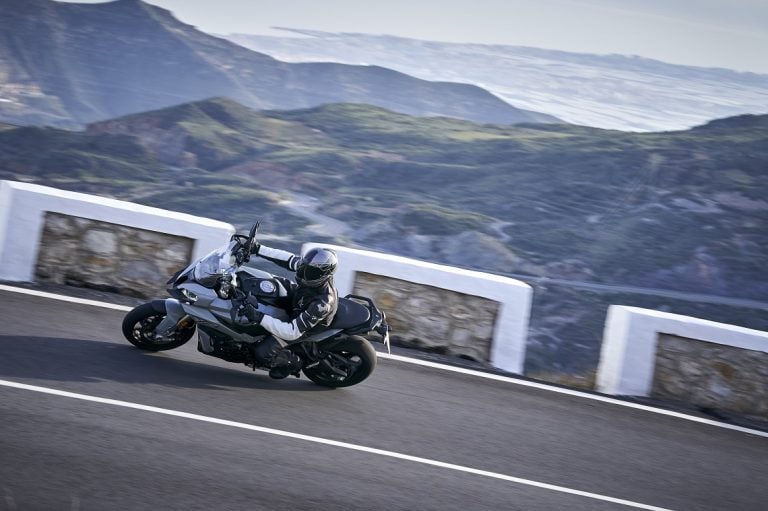Experience a tank slapper can be a dangerous and scary experience on two wheels, but the good news is that the right technique, disaster can be avoided. Misti Hurst explains all
A tank slapper is a rapid, high-intensity, and unwanted motion of your motorcycle’s handlebars back and forth. Literally, it is the slapping of the bars from side to side that can become violent enough to hit the motorcycle’s tank, hence the name. The bad news is that they are scary as hell and can cause some pretty nasty crashes. The good news is that there are some very effective techniques you can use to handle them.
What causes tank slappers?
Headshake, which can lead to a tank slapper, is most often caused by hitting a bump or a ripple in the pavement or when accelerating hard out of a corner. Hitting a bump can cause the front wheel to be thrown slightly off-centre, which then initiates a bouncing or flicking back and forth of the tyre as it tries to regain stability and traction.
Hard acceleration can have a similar effect in that it can cause the front end to get light or even wheelie, meaning that the tyre is no longer touching the ground. When it touches back down, it can skip or bounce off-centre and begin to flick back and forth as the bike automatically tries to self-correct the problem.
If your bike is set up correctly and in good mechanical condition, then the headshake should stay up front and not transfer to the rear of the bike. Riders may not realise that the process of headshake is a necessary part of a bike’s suspension system. Eventually, the shaking will stop unless we interfere.
How riders make the situation worse
Our typical reaction when the handlebars start to shake slightly is to stiffen up our hands and arms on the bars. When we automatically react and grip the bars tighter, the head shake is transferred through our bodies to the rest of the bike, and that is when the shaking can get more violent. Being too tight on the bars is one of the most common causes of motorcycle handling problems.
How to prevent a tank slapper from happening
By knowing that gripping the bars too tight transfers headshake through the bike and makes it worse. We can work to prevent a tank slapper by maintaining a relaxed position on the bike at all times. Using your knees to grip the tank creates lower body stability and allows you to keep your arms relaxed. Sitting back slightly in your seat can give your arms room to maintain a nice bend and ensure your elbows are pointing down. Now flap them like you’re doing the funky chicken. That’s relaxed.
Installing a steering damper is another way to help prevent tank slappers by limiting the travel and intensity of any head shake that the bike is experiencing by damping or soaking up the excess energy. Steering dampers are necessary on more modern bikes with more aggressive frame geometry, relatively short wheelbases, and powerful engines.
Dampers are mounted upfront so that there is insufficient leverage to transfer shake through the bike. Keep in mind that a motorcycle with a steering damper will still shake if you are tight on the bars, so relax.
What to do if you experience a tank slapper
If you do find yourself in the unfortunate situation of experiencing a tank slapper, don’t try to muscle the bike or force it to stop. This simply won’t work. Try to relax your grip on the bars, pinch the tank with your knees, and lift your butt slightly off the seat.
Also, don’t chop the throttle as that will put more weight onto the front tyre, making the situation worse. Ideally, maintain a smooth and steady throttle or continue to accelerate if it’s possible to transfer the weight to the rear of the bike.
Popping a wheelie would eliminate a tank slapper immediately as the front wheel would no longer be bouncing back and forth in an effort to straighten itself out. However, I don’t know many people that could pull off a stunt like that in the middle of a panicked situation.
Another important thing to remember is that, occasionally, very violent tank slappers can force the front brake pads and brake pistons away from the rotors, causing the brakes to go soft or fade completely. So, once you regain control of the motorcycle, check your front brakes, and if they feel soft, pump the lever a few times until the pressure returns.
Finding yourself in a situation where the motorcycle you are on is suddenly out of control is undoubtedly a scary predicament.
The more knowledge you can arm yourself with, the better equipped you are to handle emergency situations. Ride safe.

